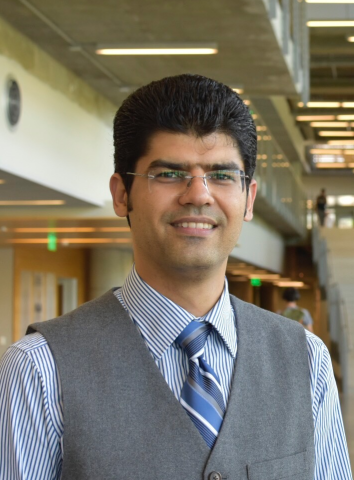ECE Ph.D. student Sajjad Abdollahramezani has received a SPIE Scholarship, which recognizes excellence in both research and leadership abilities.
Sajjad Abdollahramezani has received a SPIE Scholarship, which recognizes excellence in both research and leadership abilities. Abdollahramezani is a Ph.D. student in the Georgia Tech School of Electrical and Computer Engineering, where he is a member of the Photonics Research Group. His advisor is Ali Adibi, who is the Joseph M. Pettit Professor in Electronics.
Abdollahramezani’s research is in the area of dynamically reconfigurable metaphotonic devices and systems. This work is focused on the realization of a new class of reconfigurable artificial photonic structures called metasurfaces with the ability to dynamically manipulate an optical wavefront with unprecedented resolutions and speeds. The minimum controllable pixel size in these metasurfaces and the level of control over the properties of the optical wavefront in the spatial, spectral, and temporal domains make them the unchallenged choice for realization of novel optical imaging, computing, and sensing systems.
This level of control over such a small size is enabled by using a hybrid material platform composed of low-loss dielectrics and phase-change materials. Through careful design and optimal fabrication processes, this work promises new frontiers in using dynamically reconfigurable metaphotonic devices and systems for several practical applications that require dynamic shaping of an optical wavefront, including imaging, spectroscopy, computing, and augmented reality.
Abdollahramezani came to Georgia Tech as a Ph.D. student in August 2016 and joined the Photonics Research Group as a graduate research assistant in September 2017. He received his bachelor’s and master’s degrees in electrical and computer engineering from Isfahan University of Technology and Sharif University of Technology in 2013 and 2015, respectively.
About SPIE
SPIE is the international society for optics and photonics. It was founded in 1955 to advance light-based technologies. Serving 255,000 constituents from 183 countries, the not-for-profit society advances emerging technologies through interdisciplinary information exchange, continuing education, publications, patent precedent, and career and professional growth.
